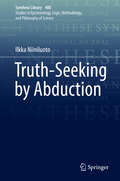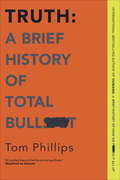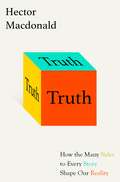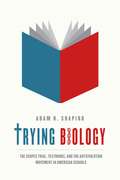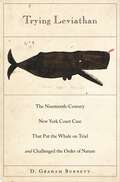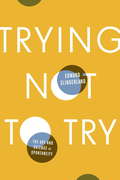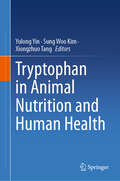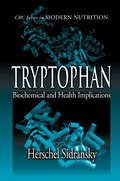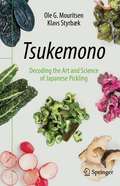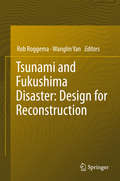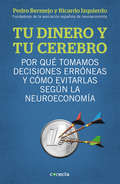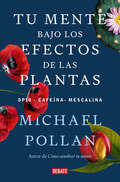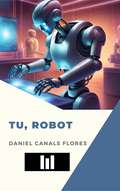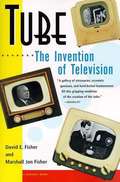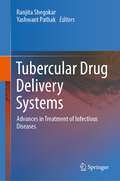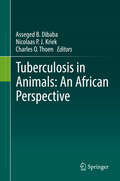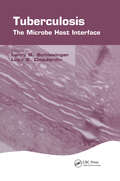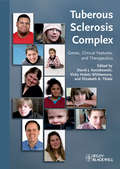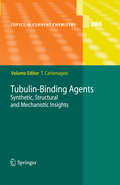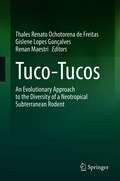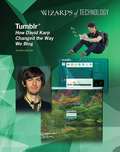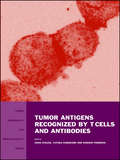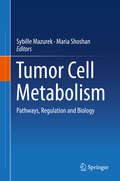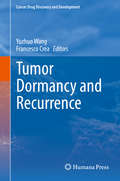- Table View
- List View
Truth-Seeking by Abduction (Synthese Library #400)
by Ilkka NiiniluotoThis book examines the philosophical conception of abductive reasoning as developed by Charles S. Peirce, the founder of American pragmatism. It explores the historical and systematic connections of Peirce's original ideas and debates about their interpretations. Abduction is understood in a broad sense which covers the discovery and pursuit of hypotheses and inference to the best explanation. The analysis presents fresh insights into this notion of reasoning, which derives from effects to causes or from surprising observations to explanatory theories.The author outlines some logical and AI approaches to abduction as well as studies various kinds of inverse problems in astronomy, physics, medicine, biology, and human sciences to provide examples of retroductions and abductions. The discussion covers also everyday examples with the implication of this notion in detective stories, one of Peirce’s own favorite themes.The author uses Bayesian probabilities to argue that explanatory abduction is a method of confirmation. He uses his own account of truth approximation to reformulate abduction as inference which leads to the truthlikeness of its conclusion. This allows a powerful abductive defense of scientific realism. This up-to-date survey and defense of the Peircean view of abduction may very well help researchers, students, and philosophers better understand the logic of truth-seeking.
Truth: A Brief History Of Total Bullsh*t
by Tom Phillips“A lighthearted history of lying”—from the international bestselling author of Humans: A Brief History of How We F*cked It All Up (Kirkus Reviews).We live in a “post-truth” world, we’re told. But was there ever really a golden age of truth-telling? Or have people been lying, fibbing and just plain bullsh*tting since the beginning of time?Tom Phillips, editor of a leading independent fact-checking organization, deals with this question every day. In Truth, he tells the story of how we humans have spent history lying to each other—and ourselves—about everything from business to politics to plain old geography. Along the way, he chronicles the world’s oldest customer service complaint, the Great Moon Hoax of 1835 and the surprisingly dishonest career of Benjamin Franklin.Sharp, witty and with a clear-eyed view of humanity’s checkered past, Truth reveals why people lie—and how we can cut through the bullsh*t.Praise for Humans: A Brief History of How We F*cked It All Up“A laugh-along, worst-hits album for humanity.” —Steve Brusatte, New York Times–bestselling author of The Rise and Reign of the Mammals“[A] perfect blend of brilliance and goofiness.” —BuzzFeed“[A] timely, irreverent gallop through thousands of years of human stupidity.” —Nicholas Griffin, author of The Year of Dangerous Days“Chronicles humanity’s myriad follies down the ages with malicious glee and much wit . . . a rib-tickling page-turner.” —Business Standard
Truth: How the Many Sides to Every Story Shape Our Reality
by Hector MacDonaldFrom one of the world's leading experts in business storytelling, and for readers of Daniel Levitin, Nate Silver, and Charles Duhigg, Truth: A User's Guide is about the different types of competing truths we face every day in life: how to identify them, why they work, when they are used and misused, and what we can do to guard against them or--when appropriate--to make constructive use of them.We tend to see the world like Orwell's Winston Smith: "There was truth and there was untruth." Yet the world is far more complicated than that. In a time of "post-truth", when "fake news" is itself the subject of our headlines, it is not "untruths" that we need to worry about. Hector Macdonald reveals and examines one of our greatest collective blind spots: we are all routinely misled by the truth. This is because for any fact, scenario, story, and situation, there are what Hector terms "Competing Truths." Why do Competing Truths matter? They matter because we vote, shop, work, co-operate, and fight based on what we believe to be true, and what we believe depends in large part on what we read or hear from others. Many of the most sophisticated and influential forms of political, business, and media communication manipulate technically true statements to pull the wool over the public's eyes. Truth is not an absolute--it has its own spectrum. Truth: A User's Guide shows us how to cut through the nebulous issue of truth using a scaffold of timely examples. These examples range from the disingenuous use of statistics in Donald Trump's speeches to the 2013 fallacy that Western quinoa demand was disadvantaging native Andean farmers, to the structure, ethics, and success of Uber. Macdonald is as comfortable and insightful parsing the influence of Facebook as he is examining Colgate's misleading campaign as the toothpaste recommended by dentists. Truth: A User's Guide explores how we can guard against the noise of competing truths, in business, in our personal relationships, and within ourselves, but also how we can use them to our advantage. Written with authority and humour, this is an accessible and illuminating narrative that will find a wide audience among readers in search of understanding why the meaning of "truth" seems to have gone completely haywire.
Trying Biology: The Scopes Trial, Textbooks, and the Antievolution Movement in American Schools
by Adam R. ShapiroIn Trying Biology, Adam R. Shapiro convincingly dispels many conventional assumptions about the 1925 Scopes "monkey" trial. Most view it as an event driven primarily by a conflict between science and religion. Countering this, Shapiro shows the importance of timing: the Scopes trial occurred at a crucial moment in the history of biology textbook publishing, education reform in Tennessee, and progressive school reform across the country. He places the trial in this broad context--alongside American Protestant antievolution sentiment--and in doing so sheds new light on the trial and the historical relationship of science and religion in America. For the first time we see how religious objections to evolution became a prevailing concern to the American textbook industry even before the Scopes trial began. Shapiro explores both the development of biology textbooks leading up to the trial and the ways in which the textbook industry created new books and presented them as "responses" to the trial. Today, the controversy continues over textbook warning labels, making Shapiro's study--particularly as it plays out in one of America's most famous trials--an original contribution to a timely discussion.
Trying Leviathan: The Nineteenth-Century New York Court Case That Put the Whale on Trial and Challenged the Order of Nature
by D. Graham BurnettIn Moby-Dick, Ishmael declares, "Be it known that, waiving all argument, I take the good old fashioned ground that a whale is a fish, and call upon holy Jonah to back me." Few readers today know just how much argument Ishmael is waiving aside. In fact, Melville's antihero here takes sides in one of the great controversies of the early nineteenth century--one that ultimately had to be resolved in the courts of New York City. In Trying Leviathan, D. Graham Burnett recovers the strange story of Maurice v. Judd, an 1818 trial that pitted the new sciences of taxonomy against the then-popular--and biblically sanctioned--view that the whale was a fish. The immediate dispute was mundane: whether whale oil was fish oil and therefore subject to state inspection. But the trial fueled a sensational public debate in which nothing less than the order of nature--and how we know it--was at stake. Burnett vividly recreates the trial, during which a parade of experts--pea-coated whalemen, pompous philosophers, Jacobin lawyers--took the witness stand, brandishing books, drawings, and anatomical reports, and telling tall tales from whaling voyages. Falling in the middle of the century between Linnaeus and Darwin, the trial dramatized a revolutionary period that saw radical transformations in the understanding of the natural world. Out went comfortable biblical categories, and in came new sorting methods based on the minutiae of interior anatomy--and louche details about the sexual behaviors of God's creatures. When leviathan breached in New York in 1818, this strange beast churned both the natural and social orders--and not everyone would survive.
Trying Not to Try: Ancient China, Modern Science, and the Power of Spontaneity
by Edward SlingerlandA deeply original exploration of the power of spontaneity--an ancient Chinese ideal that cognitive scientists are only now beginning to understand--and why it is so essential to our well-being Why is it always hard to fall asleep the night before an important meeting? Or be charming and relaxed on a first date? What is it about a politician who seems wooden or a comedian whose jokes fall flat or an athlete who chokes? In all of these cases, striving seems to backfire. In Trying Not To Try, Edward Slingerland explains why we find spontaneity so elusive, and shows how early Chinese thought points the way to happier, more authentic lives. We've long been told that the way to achieve our goals is through careful reasoning and conscious effort. But recent research suggests that many aspects of a satisfying life, like happiness and spontaneity, are best pursued indirectly. The early Chinese philosophers knew this, and they wrote extensively about an effortless way of being in the world, which they called wu-wei (ooo-way). They believed it was the source of all success in life, and they developed various strategies for getting it and hanging on to it. With clarity and wit, Slingerland introduces us to these thinkers and the marvelous characters in their texts, from the butcher whose blade glides effortlessly through an ox to the wood carver who sees his sculpture simply emerge from a solid block. Slingerland uncovers a direct line from wu-wei to the Force in Star Wars, explains why wu-wei is more powerful than flow, and tells us what it all means for getting a date. He also shows how new research reveals what's happening in the brain when we're in a state of wu-wei--why it makes us happy and effective and trustworthy, and how it might have even made civilization possible. Through stories of mythical creatures and drunken cart riders, jazz musicians and Japanese motorcycle gangs, Slingerland effortlessly blends Eastern thought and cutting-edge science to show us how we can live more fulfilling lives. Trying Not To Try is mind-expanding and deeply pleasurable, the perfect antidote to our striving modern culture.From the Hardcover edition.
Tryptophan in Animal Nutrition and Human Health
by Yulong Yin Sung Woo Kim Xiongzhuo TangThis book integrates the research progress of Tryptophan (Trp) and its metabolites in animal nutrition and human health. It recapitulates the effects of Trp nutrition on the regulation of various physiological functions in farmed animals as well as the clinical connections between Trp metabolism and human diseases. Furthermore, this book includes detailed information about the manufacturing process of industrial Trp production and methodologies to study Trp metabolism. This book not only brings numerous benefits to academic communities worldwide but also provides practical values for industrial professionals/companies. Both of these two aspects will expand our understanding of how amino acid metabolism contributes to the maintenance of host health.
Tryptophan: Biochemical and Health Implications (Modern Nutrition)
by Herschel SidranskyHistorically, the amino acid tryptophan has been considered to play a role in cancer development and the aging process. In recent times, this nutrient has been associated with eosinophila myalgia syndrome - a new human disease that attacks the muscular system. This detailed book examines the implications of the large measure of fresh information ga
Tsukemono: Decoding the Art and Science of Japanese Pickling
by Ole G. Mouritsen Klavs StyrbækOne of the best-kept secrets of Japanese cuisine is a range of side dishes known as tsukemono (つけもの, 漬物). The word, pronounced ‘tskay-moh-noh,’ means ‘something that has been steeped or marinated’ (tsuke—steeped; mono—things). Although tsukemono are usually made from vegetables, some fruits, flowers, and a few rhizomes are also preserved this way; it is, therefore, more accurate to characterize them as ‘pickled foods.’ Their preparation makes use of one or more conservation techniques, involving ingredients such as salt, sugar, vinegar, alcohol, and herbs, in combination with methods including dehydration, marinating in salt and acidic liquids, fermentation, and curing. The process of making tsukemono amounts to more than just a simple way of preserving otherwise perishable fresh produce. Apart from its nutritional value, the dish stimulates the appetite, provides delicious taste sensations, and improves digestion, all while remaining an elegant study in simplicity and esthetic presentation. This book goes well beyond explaining the secrets of making crisp tsukemono. The authors discuss the cultural history and traditions associated with these pickled foods; provide recipes and outline techniques for preparing them at home with local ingredients; describe the healthful benefits and basic nutritional value to be found in the various types of pickles; and show how easy it is to serve them on a daily basis to stimulate the appetite or as condiments to accompany vegetable, fish, and meat dishes. The goal is to encourage the readers of this book to join us in a small culinary adventure that will allow us to expand and diversify our consumption of plant-based foods, which are so vital to our overall well-being. And along the way, there may be a few surprises.
Tsunami and Fukushima Disaster: Design for Reconstruction
by Rob Roggema Wanglin YanThis book consists of two parts. The first part describes the context in which the Prefectures of Minamisoma and Kesennuma need to operate and what the meaning is of the multiple disasters that occurred in the area. The second part illuminates the design process and content of the Minamisoma and Kesennuma designs. Thirdly, the chapters are alternated with reflections on the design and analyses of the disaster on specific themes: energy, demographics and economic factors, environment, water and ecology. The book ends with observations and transcripts of participants in the process, highlighting the benefits of the approach, the appraisal of the process, the appreciation of the design and the parts that could be improved. This final element will lead to recommendation how to implement these kinds of approaches in the area itself and how to spread out over the Tohuku region (the tsunami hit region) and other regions in Japan and Worldwide.
Tu dinero y tu cerebro: Por qué tomamos decisiones erróneas y cómo evitarlas según la neuroeconomía
by Ricardo Izquierdo Pedro BermejoTu dinero y tu cerebro permitirá al lector no solo comprender el mecanismo que explica sus errores económicos sino también, en gran medida, le enseñará cómo evitarlos. Cada día tomamos innumerables decisiones de carácter económico: compramos una determinada marca de champú, elegimos un coche o adquirimos acciones de una empresa. Gracias a la crisis económica hemos descubierto que muchas de estas decisiones a menudo no merecen el calificativo de razonables. Por ello, encontraremos cada vez más personas que se preguntan por qué compraron un piso que pueden pagar solamente con enormes sacrificios o por qué eligieron un modelo de coche todoterreno cuando solo conducen por la ciudad. El objetivo de Tu cerebro y tu dinero es explicar por qué en muchas ocasiones acabamos haciendo lo contrario de lo que nos proponemos, por qué aplicamos las emociones en lugar de la razón y por qué somos tan influenciables ante losmensajes de la publicidad. Para comprender cómo se produce este divorcio entre razón y emoción, los autores describen qué pasa por nuestras cabezas cuando tomamos decisiones en las que está involucrado el dinero, y cómo nuestro cerebro arcaico, desarrollado en el Paleolítico para garantizar nuestra supervivencia, hace que compremos o invirtamos de forma errónea. «Observa las fluctuaciones de mercado como amigo, no como enemigo, y saca provecho de las imprudencias en lugar de participar en ellas.»Warren Buffett
Tu mente bajo los efectos de las plantas
by Michael PollanUn libro provocador que cambiará la percepción que tenemos de las drogas, las plantas psicoactivas y todo los tabúes que las rodean. «Maravilloso. Derrumba las diferencias entre legal e ilegal, médico y recreativo, exótico y cotidiano, apelando al principio que une a todo ello: las afinidades entre la bioquímica vegetal y la mente humana».The New York Review of Books Usamos las plantas a diario para alterar nuestra conciencia. Nos relajamos con lavanda o valeriana y nos activamos con cafeína, sin jamás pensar en ello como una adicción. Entonces ¿por qué otras sustancias de origen vegetal, como la psilocibina o la mescalina, son ilegales? ¿Según qué el criterio se ensalzan los beneficios del café y en cambio plantar amapolas es delito en algunos lugares? Michael Pollan investiga tres drogas de origen vegetal, el opio, la cafeína y la mescalina, para mostrar la arbitrariedad de nuestro juicio respecto a estas sustancias, profundamente condicionado por el estigma social. El autor revisa el papel de las plantas psicoactivas en distintas épocas y culturas, a la vez que experimenta con sus efectos. El objetivo es comprender por qué el ser humano hace todo lo posible para alterar su conciencia y, al tiempo, limita este deseo universal con leyes y condena social. Esta obra, combinación de historia, divulgación científica, memorias e incluso periodismo gonzo, ofrece una mirada desprejuiciada y atenta a las distintas variables que han determinado la condena o la legalización. Y da cuenta de la genuina curiosidad del ser humano a la hora de relacionarse con la naturaleza y alcanzar niveles distintos de percepción de nuestro entorno. La crítica ha dicho:«Un estudio concienzudo. A medida que las políticas antidrogas se vuelvan menos punitivas, deberíamos reflexionar en mayor profundidad sobre las sustancias de las que hemos llegado a depender».The New Yorker «Una lectura maravillosay cautivadora que te dejará pensando mucho después de acabarla. Leerlo es como tomar un psicodélico».The Washington Post «Una narración soberbia. Plantea magistralmente una serie de grandes preguntas sobre drogas, plantas y personas que cambiarán nuestra manera de pensar».The New York Times Book Review «Fascinante. Con profundidad histórica, impacto político y exuberancia narrativa, es un llamamiento a repensar la relación de la sociedad con las plantas psicoactivas».The Boston Globe «La curiosidad insaciable de Pollan sus temas es un don que le ha valido un best seller tras otro. Una combinación fascinante de historia, crónica contemporánea y potente autorreflexión con las plantas como hilo conductor».San Francisco Chronicle «Pollan es un maestro en desarmar la ciencia más compleja para crear una historia atractiva y desafiar las creencias sociales más arraigadas. Aquí descifra nuestras ideas sobre lo que son las drogas y por qué las buscamos».Time
Tu, robot
by Daniel Canals FloresTu, robot è un serio avvertimento per l'Umanità. Scrivendo questa storia un brivido mi ha attraversato l'anima: l'acronimo I.A. (Intelligenza Artificiale) corrisponde alle iniziali del genio indiscusso della robotica Isaac Asimov. Che il Maestro ne fosse a conoscenza? Questo libro vuole essere un tributo al suo lavoro ed alla sua inquietante visione futuristica. La quarta rivoluzione industriale e l’egoismo di pochi daranno origine al mostro che finirà per dominare l’Universo e distruggere la specie umana…
Tube: The Invention of Television
by Marshall Jon Fisher David E. FisherThe colorful, definitive story of the inventors of television, the race for patents, and the vicious courtroom battles for markets. You're on Jeopardy, the category is popular science, and the answer is "In 1927 he transmitted the first image via an all-electronic TV system." If you don't know the question, you're not alone. In the half century since its commercial unveiling, television has become the undisputed master of communications media, revolutionizing the way postwar generations have viewed the world. Yet few know how television was created, who created it, or how it actually works. Tube is a riveting tale of technological and commercial adventure. Here is the story not of one mad scientist working alone in a laboratory but of a group of brilliant minds—iconoclasts with motivations that ranged from the idealistic zeal of invention to pure greed, each keeping an eye on the others in the race for fortune and glory. Here, too, is the progress of an invention—from laboratory prototypes that drew public laughter to the legal warfare for control of what would become an enormous market power. With devilish character sketches, compelling stories, and engaging, accessible scientific explanations, authors David E. Fisher and Marshall Jon Fisher take us through the advent of "living color" and beyond, concluding with a glance to the future of the medium and the impact of recent digital technologies.
Tubercular Drug Delivery Systems: Advances in Treatment of Infectious Diseases
by Yashwant Pathak Ranjita ShegokarThe book targets new advances in areas of treatment and drug delivery sciences for tuberculosis. It covers advances in drug therapy and drug targeting that focus on innovative trend defining technologies and drug delivery platforms in the understanding of host-pathogens relationship for providing better therapy. A wide variety of novel and nano-formulations using promising technologies are being explored to deliver the drug via different administration routes. This book It addresses the gap between new approaches and old treatment modalities and how they are superior in pharmacological performance when tested in in-vitro and in-vivo. Audience from wide range group like from researchers to regulatory bodies can benefit from the compiled information to find out patient needs and current research advances in the field of tuberculosis research..
Tuberculosis in Animals: An African Perspective
by Charles O. Thoen Asseged B. Dibaba Nicolaas P. J. KriekThis book recounts the biology of M. bovis, followed by the status of bovine Tuberculosis (bTB) in African countries, primarily based on zoonotic and epidemiological field reports. Since the accumulation of data is valueless unless it led to practicable control measures, emphasis is put on locally adapted protocols for future control of the disease. In order to systematically evaluate the knowledge base of bTB, Epidemiologic Problem Oriented Approach (EPOA) methodology was used. The methodology is composed of two triads: i) the problem identification/characterization triad, which is mainly descriptive in nature, and ii) the problem management/solution/mitigation triad, which is mainly geared toward problem management/solution (see figure). The first triad comprises three pillars: i) agent ii) host, and iii) environment and the second one: i) therapeutics/treatment, ii) prevention/control, and iii) health maintenance/promotion. The two triads are linked together by the diagnostic procedure linkage. The systematic and detailed studies of the ‘Host-Agent-Environment’ interactions are the building blocks to the understanding of agent transmission pathways and disease spread. These may include data about the disease status of the country, the nature of the disease agent and its hosts, the modes of transmission, the wildlife reservoirs in nature, persistence of infection, and agent survival in animal products and the environment. The problem identification and characterization triad identifies these interactions. Once a problem has been identified and well understood, the next step is to minimize the risk of transmission and spread of a disease. This area, referred to as problem solution/management triad, consists of problem management alternatives that rely upon prevention/control, and health maintenance/promotion of the disease in livestock, wildlife, and humans with the emphasis on resource-poor, developing countries in Africa.
Tuberculosis: The Microbe Host Interface
by Larry S. Schlesinger Lucy E. DesJardinM. tuberculosis remains one of the most successful human pathogens known. The causative agent of tuberculosis, it also has a unique ability to persist for years in the infected, apparently healthy host. This dormant organism can be reactivated years, even decades later to cause tuberculosis. This book reviews the most important state-of-the-art approaches currently used to study microbe-host interactions and highlights emerging methodologies.
Tuberous Sclerosis Complex: Genes, Clinical Features and Therapeutics (Developmental Perspectives In Psychiatry Ser.)
by Elizabeth A. Thiele David J. Kwiatkowski Vicky Holets WhittemoreThe only comprehensive overview of the molecular basis and clinical features of the genetic disorder tuberous sclerosis, which affects approximately 50,000 people in the US alone. Special focus is placed on novel insights into the signal transduction pathways affected by the disease as well as genotype phenotype correlations, while existing and potential therapies are also discussed in depth. The editors are leading experts in research and treatment of the disease as well as the Vice President of the Tuberous Sclerosis Alliance, the only voluntary health organization for TSC in the US.
Tubulin-Binding Agents
by Teresa CarlomagnoThis series presents critical reviews of the present position and future trends in modern chemical research. It contains short and concise reports on chemistry, each written by the world renowned experts.
Tuco-Tucos: An Evolutionary Approach to the Diversity of a Neotropical Subterranean Rodent
by Thales Renato Ochotorena de Freitas Gislene Lopes Gonçalves Renan MaestriThis book examines the biology of tuco-tucos (Ctenomys) from an evolutionary perspective. Historically, these subterranean rodents have long attracted the attention of scientists due to its remarkable chromosomes variability and rapid diversification. A wealth of knowledge on physiology, ecology, genetics, morphology, paleontology, and taxonomy has been documented in the last 70 years through numerous single publications. In this volume, expert investigators review and frame these essays with the breadth of current understanding. The collection of chapters are presented into the major topics: i) Evolution of Ctenomys, ii) Geographic Patterns, iii) Organismal Biology, and iv) Environmental Relationships. Given its scope, the book will be of interest to both students and researchers and may stimulate further research with this exciting model on a wide range of evolutionary topics.
Tumble
by Adriana Hernández BergstromThis gorgeous, poetic story follows the unexpected journey of a lone tumbleweed making its way across the desert. <P><P> Wind blows.<br> Tumble goes.<br> Fence stops.<br> Tumble hops.<br> Cactus waves.<br> Tumble stays, and stays, and stays. <P><P> Using simple, succinct text and richly colored art, Adriana Hernández Bergstrom follows one tumbleweed on its journey across a desert unexpectedly teeming with life. <P><P> Tumble is an incredible read-aloud perfect for storytime or newly independent readers. Extensive backmatter identifies every plant and animal featured in the book and provides more information on the misunderstood tumbleweed and its ecosystem. <P><P><i>Advisory: Bookshare has learned that this book offers only partial accessibility. We have kept it in the collection because it is useful for some of our members. Benetech is actively working on projects to improve accessibility issues such as these.</i>
Tumblr®: How David Karp Changed the Way We Blog
by Aurelia JacksonIn the last few years, Tumblr has become one of the most popular social networking websites. Before Tumblr was the company we know today, however, it was just one of David Karp's smaller projects. Learn more about one of the most successful young people working in tech--and how he changed the way people share who they are and what they like. Discover the story behind David Karp's success--and find out what it takes to turn a new company into something amazing.
Tumor Antigens Recognized by T Cells and Antibodies (Tumor Immunology Ser.)
by Hans J. Stauss Yutaka Kawakami Giorgio ParmianiRecent progress in fundamental tumor immunology has led to immunotherapy trials in patients with solid tumors and hematological malignancies. In the past, immunotherapy approaches were primarily based on enhancement of tumor immunity with cytokines and adjuvant therapy, without knowledge of relevant tumor antigens. The discovery of tumor antigens c
Tumor Cell Metabolism
by Sybille Mazurek Maria ShoshanThe four sections of this book cover cell and molecular biology of tumor metabolism, metabolites, tumor microenvironment, diagnostics and epigenetics. Written by international experts, it provides a thorough insight into and understanding of tumor cell metabolism and its role in tumor biology. The book is intended for scientists in cancer cell and molecular biology, scientists in drug and diagnostic development, as well as for clinicians and oncologists.
Tumor Dormancy and Recurrence
by Yuzhuo Wang Francesco CreaThis volume will be the first to provide a comprehensive description of tumor dormancy. It will define the clinical and biological aspects of this phenomenon, as well as the cellular and molecular mechanisms associated with tumor dormancy. Chapters will be authored by world-renewed experts who are conducting cutting-edge research in the field. A unique feature will be a conclusive paragraph detailing future development and foreseeable clinical applications at the end of each chapter. The volume will serve as a fundamental instrument for every researcher and clinician interested in the field of tumor dormancy as well as a means of disseminating stimulating concepts and prompting the development of innovative technological solutions.
